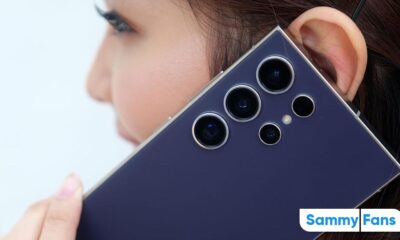Technology
Samsung Space Zoom Camera Technology (Moon Shot)
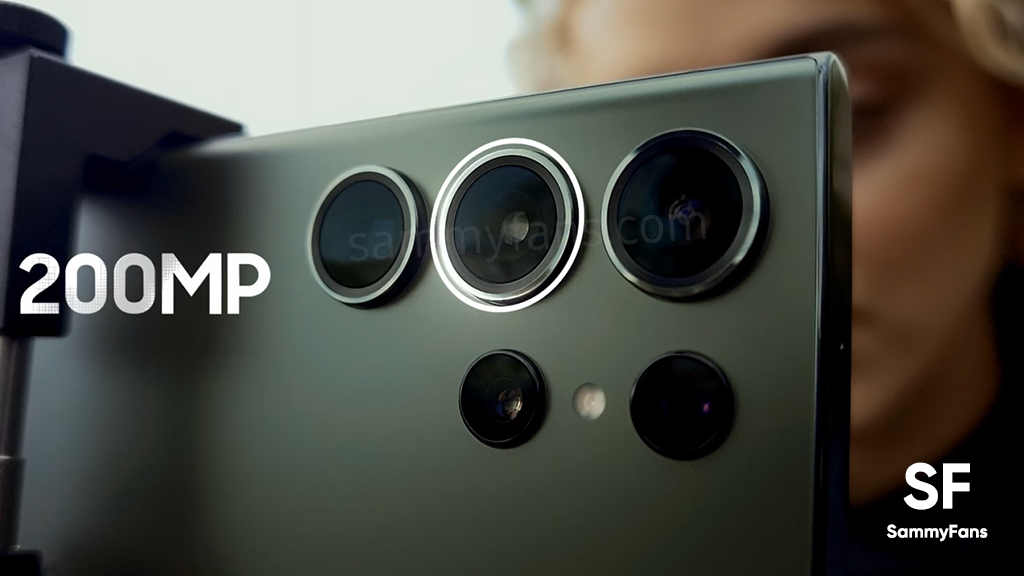
Story created in Dec. 2022 | Samsung ships the best camera phones in the industry, and the latest beast is Galaxy S23 Ultra. Thanks to the innovative Telephoto camera sensor and software optimization, it’s now possible to capture images of the Moon, with just a Samsung Galaxy smartphone.
Follow our socials → Google News, Telegram, Twitter, Facebook
Today, we discuss how your Samsung phone’s Space Zoom photography feature works. Regardless, hardware is the key factor to introduce a huge zooming/magnification range, but, well-optimized software significantly improves the overall experience. That’s what Samsung does, others not.
Way back in 2019, Samsung introduced AI technology to the mobile camera when it launched the Galaxy S10 series. The company developed a Scene Optimizer feature that helps AI to recognize the subject and provide you with the best photography experiences regardless of time and place.

Specifically for Moon photography, Samsung Galaxy S21 series debuted even better optimization with artificial intelligence. Galaxy flagships starting the Galaxy S21 series recognize Moon as the target using learned data, multi-frame synthesis, and deep learning-based AI technology at the time of the shooting.
In addition, a detail improvement engine feature has also been applied, which makes the picture clearer. If you don’t want to capture photos using AI technology, you can do it by just disabling the Scene Optimizer from the camera viewfinder.
Data learning process for Moon recognition engine
Samsung developers created the Moon recognition engine by learning various shapes of the Moon from full to crescent, based on images that people actually see with their eyes on Earth. It uses an AI deep learning model to show the presence and absence of the moon in the image and the area (square box) as a result.

Moreover, the pre-trained AI models can detect lunar areas even if other lunar images that have not been used for training are inserted. However, the Moon can’t be normally recognized if it is covered by a cloud or something else (non-lunar planets).

Brightness control process
Well, AI enhances photography of the Moon, but better results require powerful hardware part as well. As it’s difficult to detect a small Moon in regular AI photography, the Moon’s photography is possible from 25x zoom or higher.
As soon as your Galaxy phone’s camera recognizes the Moon in the high-magnification zoom, the brightness of the screen is controlled to be dark so that the Moon can be seen clearly on the camera viewfinder, alongside maintaining optimal brightness.

If you shoot the Moon in the early evening, the sky around that is not the color of the sky you see with your eyes, but it is shot as a black sky. The tech behind this function is that when the Moon is recognized, it changes the focus to infinity to keep the moon in focus.
Shake control
Starting the Galaxy S20 series, Samsung shipped the Ultra variants (S20 Ultra/S21 Ultra/S22 Ultra) with the capability of magnification up to 100x. When the user shoots the Moon with 100x zoom/magnification, it looks greatly magnified, but it is not easy to shoot because the screen shakes due to shake of hands.
For this, Samsung created a functionality called Zoom Lock that reduces shaking when the Moon is identified so it can be stably captured on your Galaxy phone’s screen without a tripod. Zoom Lock unites OIS and VDIS technology in order to maximize image stabilization to radically surpass shaking.
If you touch the screen at high magnification or shine the Moon without moving for more than 1.5 seconds to lock, the zoom map border (in the upper right of the screen) changes from white to yellow, and the Moon no longer shakes, making it easy to shoot.
Tips to take Moon shots in 100x zoom:
- After rotating the Galaxy in landscape mode, hold the phone with both hands.
- Check the position of the Moon through the zoom map and adjust it to the center of the screen.
- When the zoom map border changes to yellow, press the capture button to picture the Moon.
Learning process of lunar detail improvement engine
Once the Moon is visible at the proper brightness, your Galaxy Camera completes a bright and clear moon picture through several steps when you press the capture button. At first, the application double-checks whether the Moon detail improvement engine is required or not.
Second, the camera captures multiple photos and synthesizes them into a single shot that is bright and noise-reduced via Multi-frame Processing. Due to the long distance and lack of light in the environment, it was not enough to give the best image even after compositing multiple shots.
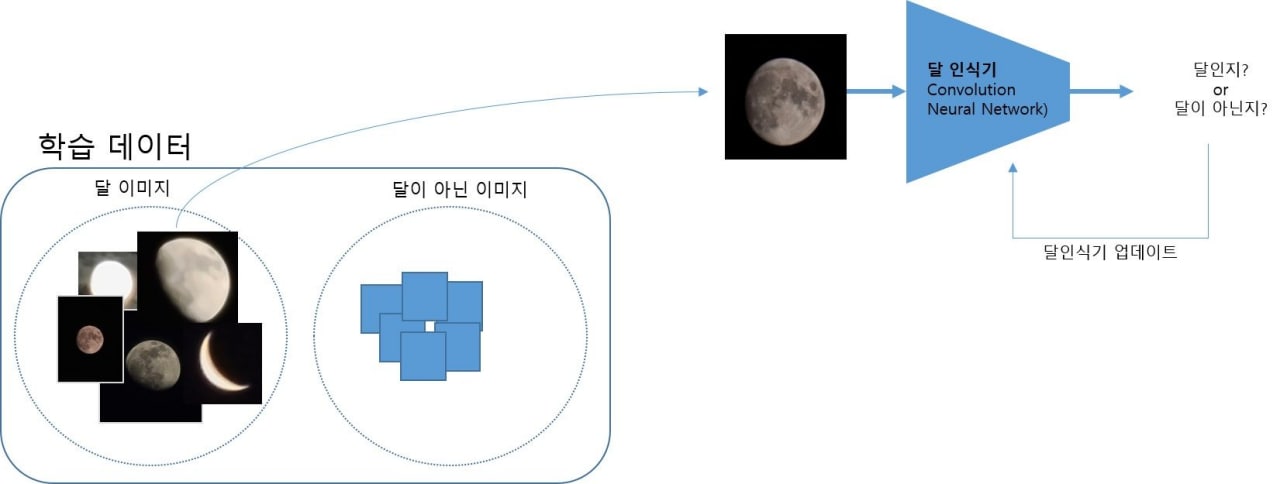
To overcome this, the Galaxy Camera uses a deep learning-based AI detail enhancement engine (Detail Enhancement technology) at the final stage to effectively remove noise and maximize the details of the Moon to complete a bright and clear picture.

Moon filming process
Samsung’s stock Camera application utilizes various AI technologies, which are detailed above, to provide clear Moon photos through various processes. Once focussed, AI automatically realizes the scene being shot and uses scene optimization technology to adjust settings for Moon quality.
To make Moon photography stable and easier, the Zoom Lock function, an image stabilization function, is used to provide clear moon photos on the preview screen. Once the Moon is positioned within the screen in the desired composition, press the shooting button to start shooting.
At this time, the Galaxy Camera combines multiple photos into a single photo to remove noise. As result, a bright and clear moon picture is completed by applying detail improvement technology that brings out the details of the moon pattern.
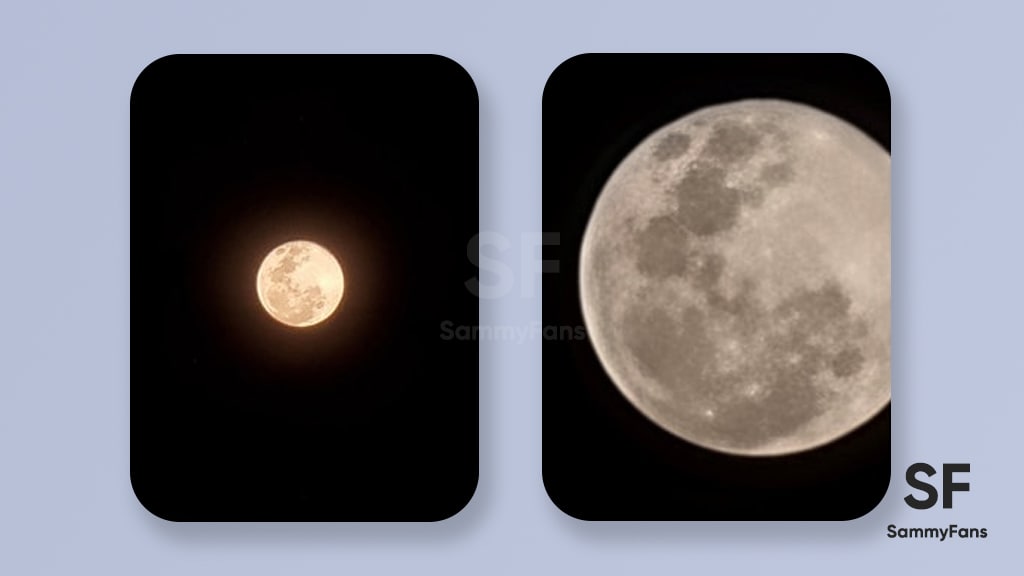
Update – March 12.
Samsung itself revealed that multiple processing techniques work before the Galaxy phone produces a crispy image of the Moon. Meanwhile, there’s a thread posted on Reddit that makes the shooting technology controversial, which shouldn’t be there.
Samsung
A tech lover’s journey with the Samsung Galaxy Z Fold4: A tale of disappointment
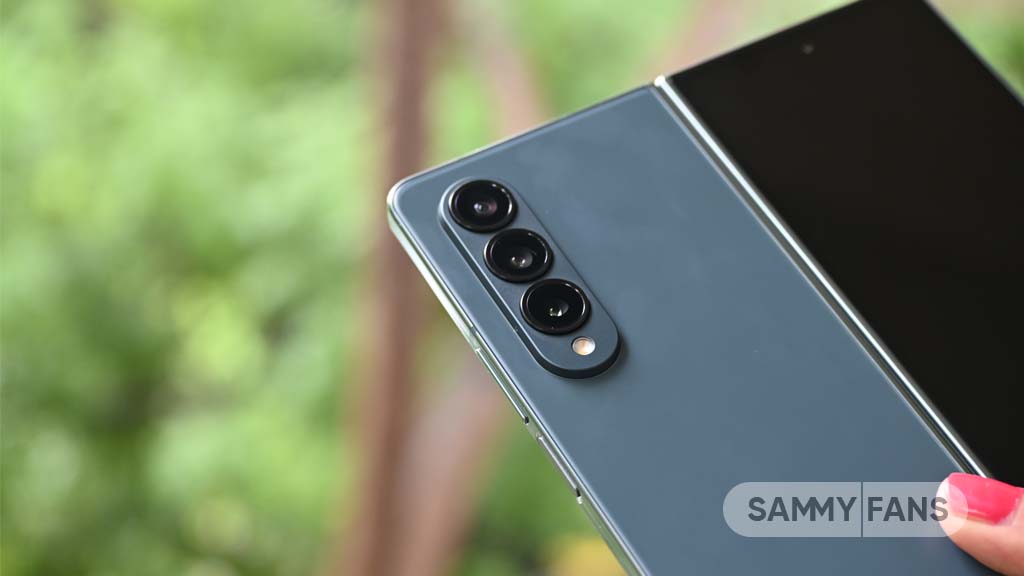
I have been a huge fan of technology, always eager to explore the latest electronic gadgets including smartphones, headphones, laptops, and several others. I have owned the Samsung Galaxy Z Fold4 5G for two years now, using it as my secondary phone for the last year.
I have always treated it carefully, so you can imagine my situation when I noticed a small black dot on the inner screen of the fold. It wasn’t long before the entire inner display stopped working, while at the same time, the outside screen remained just fine.
This has been quite a setback for me, particularly because I paid over $2000. You expect something that expensive to last, right? But here I am, with a phone where the main feature—the folding screen—is dead. Samsung wants around $650 to fix it, which seems a lot, especially since the phone itself is now only worth around $800-900 if I go for the trade-in. This questions how well these expensive foldable phones hold their value over time.
What’s even more frustrating is not knowing why the screen failed. After using various Samsung foldable phones over the years, this issue makes me think twice about the reliability of the foldable. It’s not just about my experience; it’s a concern for anyone interested in foldable technology.
I am highlighting a difference between Samsung’s marketing narrative, where the company positions itself as a leader in innovation and customer service and the experience with its products. The failure of the Samsung Galaxy Z Fold4’s inner display questions whether Samsung truly stands by its products when the product faces issues.
By sharing my experience here, I want to inform other buyers like me about the potential pitfalls of purchasing such high-end tech. I also want to influence Samsung to reconsider its approach to customer service and product reliability by bringing attention to these issues.
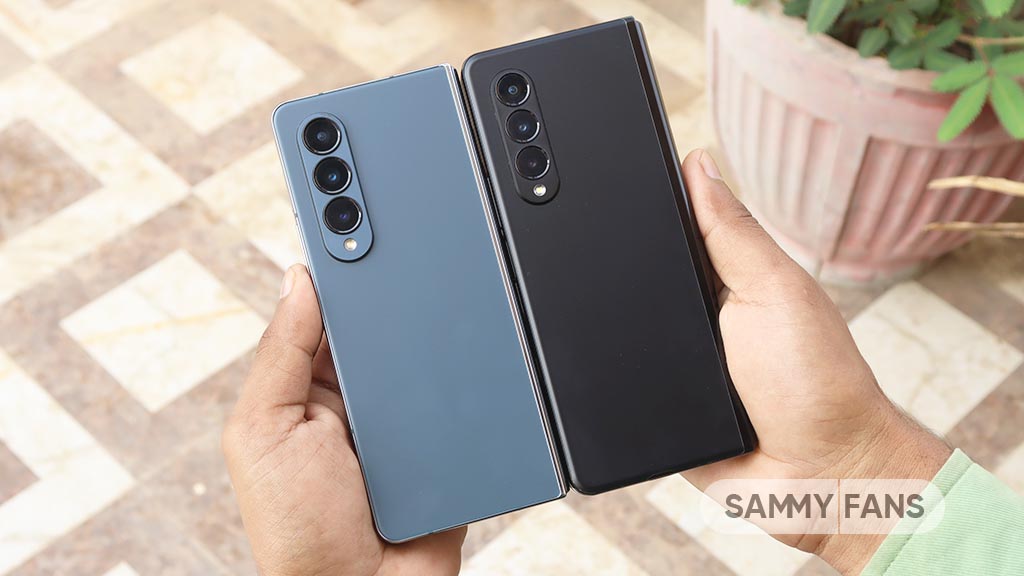
Despite being excited about the concept of foldable phones, especially the easy multitasking feature (my favorite), this negative experience has led to hesitation (or doubt in my case) about future purchases.
I hope Samsung will recognize these customer experiences and attempt to address such issues, either through improved product design, enhanced customer support, or more transparent communication about product limitations or potential issues.
These sudden breakdowns are damaging Samsung’s foldable phones’ reputation and might make potential buyers think twice before getting one.
Disclaimer
I have reviewed all Samsung Galaxy Z Fold and Flip devices launched to date. I will share more information on my X account. You can connect me there.
Technology
Samsung phones might use TSMC-made Exynos chip

Samsung Galaxy S25 series could not use Exynos 2500 due to yield concerns. A new rumor suggests that Samsung could manufacture a future Exynos chip using a TSMC process node. It’s a very wild input, rendering fans in a head-scratching situation.
Tipster Jukanlosreve claimed that Samsung is “considering” manufacturing Exynos with TSMC. The revelation appears at a time when we are nearing to the potential Galaxy S25 series unveiling early next year.
Recently, it was reported that TSMC’s 3nm yield rate is above 80%. It’s a stable yield rate, with rumors citing the rate is peaking up to 90%. Usually, chip manufacturers target a 70-75% yield rate to conduct mass production of chipsets.
TSMC is the biggest rival of Samsung Foundry business. Over the years, the Taiwanese firm widened the gap with its Korean counterpart. It has plenty of major clients including Apple, Qualcomm, MediaTek and Google.
Until the Pixel 9’s Tensor, Samsung has produced Google’s chipsets. However, the Pixel maker switched its production partner, taking TSMC in. The planned 3nm Exynos 2500 is also reportedly canceled due to extremely low yield.
Samsung + TSMC: Is it possible?
An alliance between Samsung and TSMC is not impossible, it could indeed be materialized. Samsung’s System LSI business designs Exynos for Galaxy devices. Samsung Foundry is responsible for the fabrication of mobile platforms.
Silicon manufactured using the TSMC process is way better than Samsung Foundry-made products. TSMC chips offer better performance and decent power efficiency, as well as lower overheating concerns than Samsung Foundry.
We’ve heard Samsung’s plan to spin off its Foundry division in the next three to five years. Until the Samsung Foundry reaches an adequate level of yield rate and manufacturing advancements, System LSI can ink a deal with TSMC.
Technology
Is Samsung’s Galaxy Watch skipping out on Apple’s LTPO OLED advantage?

After the Watch 10 series launch last month, the smartwatch market is buzzing with excitement for the upcoming Apple Watch 11. Reports indicate that Samsung plans to work with Apple on developing LTPO OLED technology for the new watch, while the Galaxy Watch seems to be falling behind in adopting this technology.
Apple first introduced LTPO OLED technology in its Apple Watch series with the Watch 4 and has made improvements since then. Released in 2023, the Apple Watch Ultra 2 uses LTPO2. Now, the latest LTPO3 is available in the Apple Watch 10 series.
In addition to the Apple Watch, both the Pixel Watch 2 and OPPO Watch 2 also feature LTPO displays. However, it remains uncertain whether Samsung will adopt LTPO technology for its Galaxy Watch models.

Samsung Display has been a leader in the OLED market and has previously supplied displays for Apple products, including the Apple Watch. However, Samsung is currently focusing on its Galaxy Watch line, which uses Super AMOLED displays. These displays are colorful and perform well, they don’t offer the same power savings as LTPO technology.
The Korean tech giant has been successful with this approach in the smartwatch market but it hasn’t yet adopted the new LTPO technology for its watches. Still, Samsung is expected to participate in future developments for Apple’s upcoming watch model, the Apple Watch 11 series.
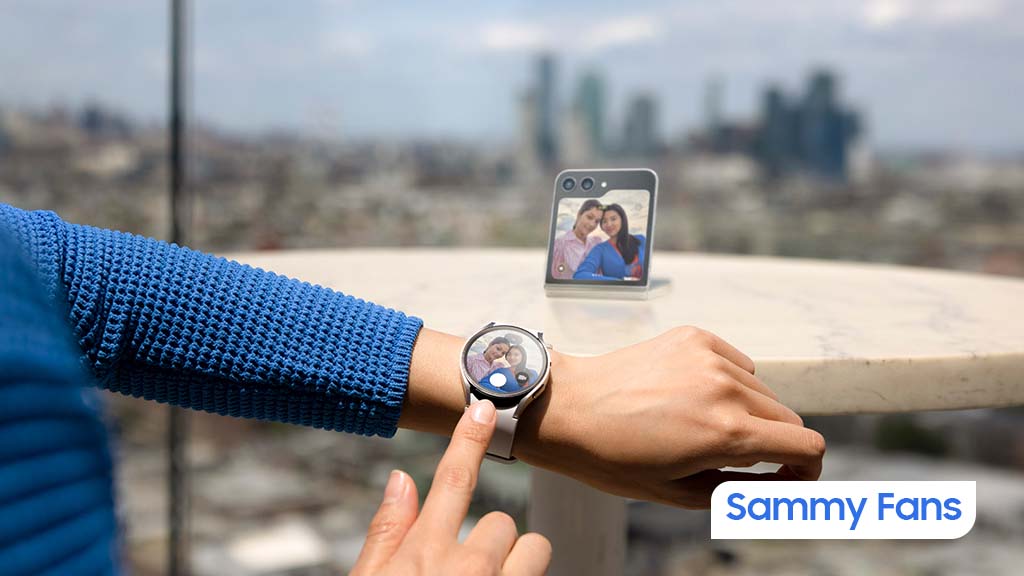
Notably, LTPO stands for low-temperature polycrystalline oxide, a technology that combines oxides with low-temperature polycrystalline silicon. LTPS provides fast responses to make displays quick to react, while oxide TFTs are more energy-efficient. By blending these two technologies, LTPO helps reduce power use, which can extend battery life.
Despite plans to provide LTPO OLED to Apple, Samsung currently has no plans to apply this technology to the Galaxy Watch. This means that the Galaxy Watch will miss out on the benefits of advancements in LTPO OLED technology. Stay tuned for more updates.
Apple iPhone 17’s LTPO upgrade is double-edged sword for Samsung

